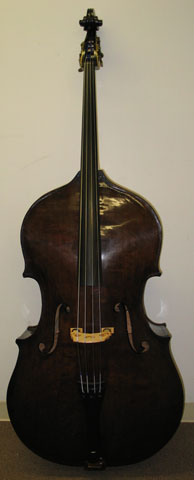 |
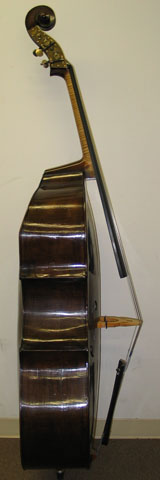 |
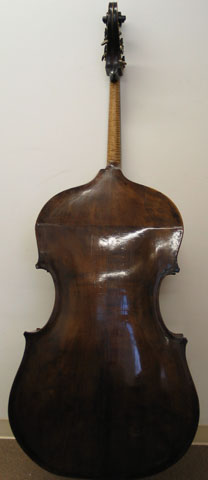 |
Panormo School, possibly by William Taylor London, c.1800 Modified 7/8 Orchestra Model w/C-Extension |
|
| 7/8 Panormo School Bass c.1800 ~ Inquire ~ | |
| Upper Bout: 21 3/4" | Belly Length: 46 5/8", slightly reduced |
| Center Bout: 16 1/4" | String Length: 41 7/8" (106.4 cm), modified |
| Bottom Bout: 28" | Varnish: Nut Brown (not original) |
| Rib Depth: 9 1/8" (The upper Back angle break tapers from is 9" to 6" at Neck) | |
| Top: Bear Claw Spruce | |
| Back: Figured English Sycamore Maple | |
| Ribs: Flamed Maple | |
| Neck / Scroll: Maple with highly flamed Maple Neck Graft with English Baker Gears | |
Features: World class Grand Panormo model with mixed Italian flair & English Panormo styling. The Scroll shows evidence of originally being built as a 3-string bass. The Plates and 3 of the Baker Gears are original with a near matched 4th Gear from the19th century. The Top and Back both measure about 6mm in thickness throughout as you would expect to see on a Panormo. The Back has a center brace like on a Flat Back that is very old and may be original as well. The upper Back angle studs inside are also in the style of Panormo's work. The first time I laid eyes on this Bass the name William Taylor came to mind. Why? Because he was Panormo's assistant for many years and also is noted for working 'in the style' of' Panormo as well. Although every Violin Book I have that lists William Taylor (which is most of them) describes him in the most familiar manner, not a single English or American dealer I know, claims to have ever seen a William Taylor bass. How could it be that he is listed as far back as the late 19th century but no one around has seen a bass by him? Maybe, it's because they are all attributed to Panormo now, documented or not. So, the question is, how many Panormo basses currently circulating around, were actually made by William Taylor as his assistant or at his own shop of which he did operate for some time? This I would like to know and I welcome any and all information about William Taylor that we can find. As far as what is already published, here is a list of what I have found so far: More on Panormo from George Hart in his book "Le Violon"; Vincenzo Panormo was the slave of many, manufacturing Double Basses and other instruments from the material selected and purchased by his temporary employer, ofttimes compelled to carry out some crotchet of the patron much against his own wishes. The wood thus forced upon him was often of the worst description; and, in addition, he was frequently obliged to complete his work within a given time. Instruments manufactured under such conditions can scarcely, it may be supposed, add to their maker's reputation. We cannot but regret that he should have been obliged to waste himself on such poor materials. Fortunately, however, in some cases he found time to exercise his skilful powers to their full extent, and has thus bequeathed to us some of the finest specimens of the copyist's art.
|
|
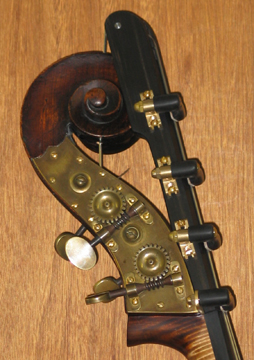 |
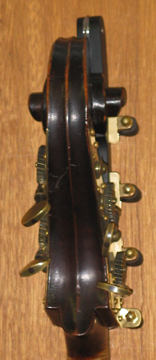 |
| This beautiful Italian style Scroll was originally a 3-string with the 3 original Gears remaining |
 |
Copyright © 2020 Ken Smith Basses, LTD. (All rights reserved) ALL PRICES AND SPECS SUBJECT TO CHANGE WITHOUT NOTICE |
 |